How to win a bike race without leaving your house
Online racing is opening up a whole new world of crash-free competition. CW’s Alex Ballinger scopes out how to become the hero of his own living room
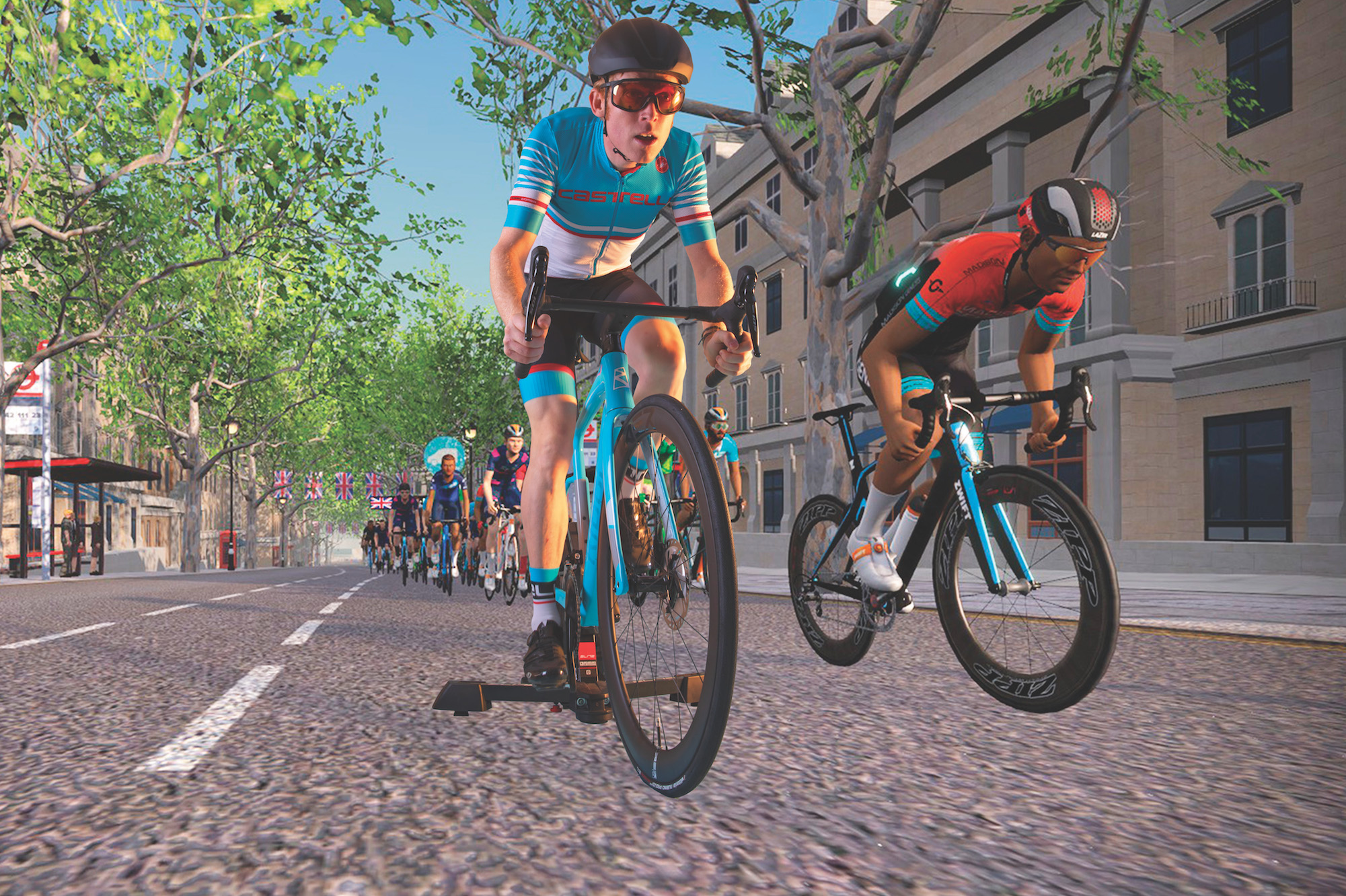
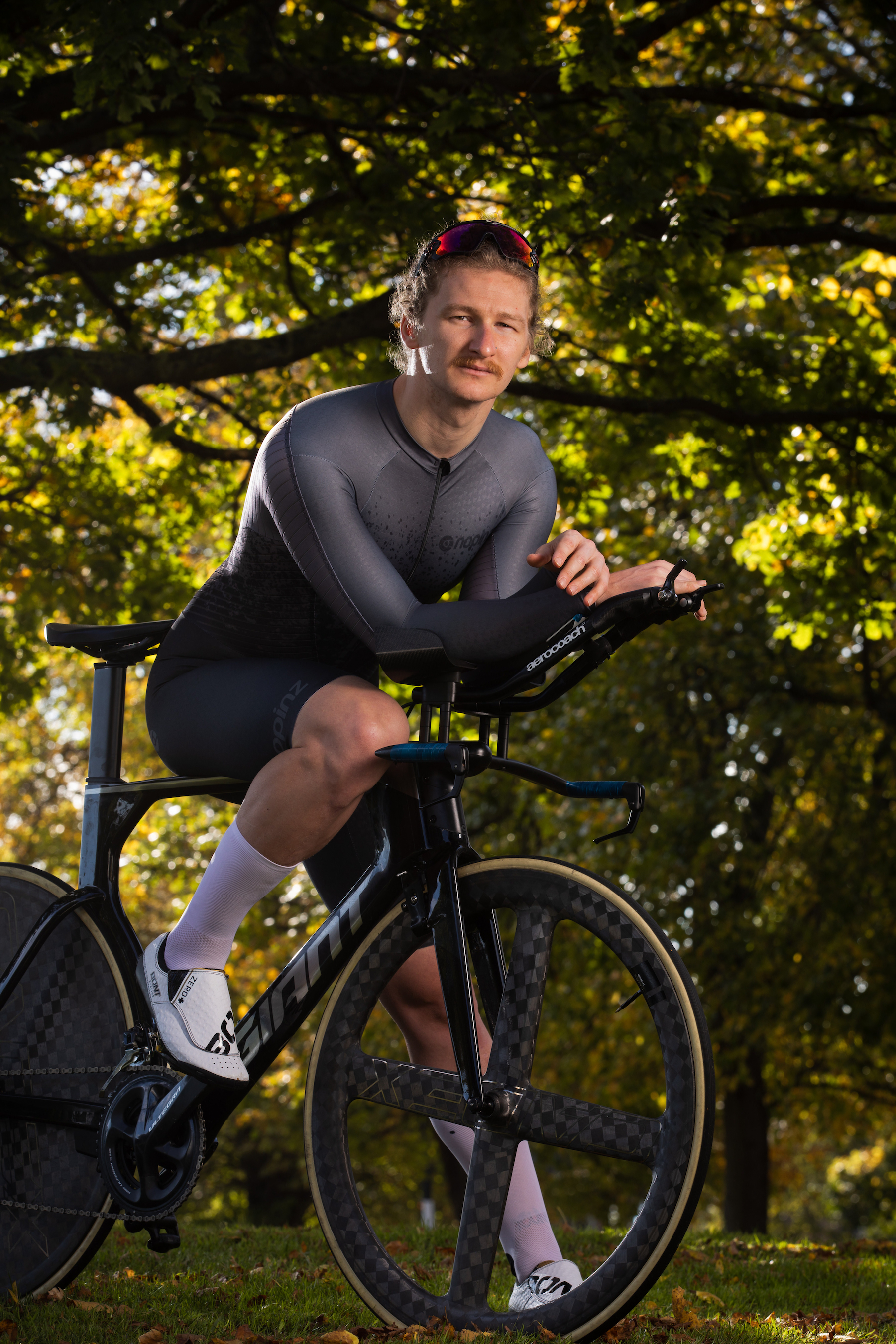
I’ve never won a bunch race. Sadly, raising your arms and basking in glory as a peloton of kitted-out rivals languishes on your wheel is an experience very few of us will enjoy in our riding careers. The adrenaline, the tactics, the effort: these are the features that keep racers coming back for more, though it’s a euphoric blend that remains, for most novice riders, the racing equivalent of a white whale — ever elusive. But thanks to the wonders of modern technology, chasing glory is now within the grasp of all of us, as long as we’re willing to search for it in our own home.
With 300 watts of enthusiasm and a bidon-full of optimism, here is a comprehensive introduction to the world of Zwift racing — with one eye firmly fixed on the top step.
Online revolution
The main player in the world of online racing world is, yes, Zwift — the multiplayer online virtual world for cyclists and runners, offering training, competition and structured workouts. While there are a few other options out there for anyone wanting to test their legs against the world, such as Tour de Giro, CVRcade and RGT, it’s Zwift that has cornered the market for virtual racing.
>>> 11 things you only know if you race on Zwift
For those new to the wonderful world of online racing, the concept is fairly simple: you set up a smart-trainer, usually fitted with a power and cadence meter, pair with a device like a phone, laptop, or tablet via Bluetooth, and away you go, connecting with thousands of cyclists around the globe in various online in all kinds of virtual race.
Chris Snook, the senior PR manager for Zwift, has some thoughts about why racing indoors has become so popular: “The two big ones here are accessibility and inclusivity. There are events taking place every day on Zwift, and no matter whether you are a climber, a sprinter, a veteran or a rookie, there is an event and a classification that will suit your riding interest or ability.”
Get The Leadout Newsletter
The latest race content, interviews, features, reviews and expert buying guides, direct to your inbox!
It’s also extremely accessible and time-efficient.
“Zwift is also incredibly convenient,” continued Snook. “There aren’t many sports that you can do from your basement. When you have an hour to spare, there’s a good chance you’ll be able to jump on Zwift and find a race. It’s racing on demand.”
Jumping into my first Zwift event — a three-lap, 35km race around a futuristic imagination of New York City — I quickly learned how savage Zwift races can be. Riders can rev up their legs as the timer counts down to zero, meaning the race starts fast and you have to hold on for dear life to stay in touch with the front group.
As I held well above my threshold (around 300W at the time), I steadily lost places and was completely detached from the peloton very quickly. When I was then finally caught by a small group, again I found I couldn’t hold the wheel. What was the issue? Was my fitness really that far behind?
After the first lap, I realised my mistake: I’d selected a time trial bike for my avatar, completely oblivious to the fact that Zwift TT bikes are not gifted with the slipstreaming effects when following the wheel — mistake number one.
After 59 minutes of racing, I crossed the line, having put out 258W average and finishing 28th in the ‘C’ category (most Zwift races are categorised by your watts per kilogram based on your FTP. C category was 2.5-3.1W/kg; A category equates to 4W/kg-plus).
‘It’s all in the game’
Right then, time to get serious. I sought the advice of Matt Rowe, business manager of the Rowe and King coaching company and brother to Team Ineos rider Luke, to improve my Zwift racing. His best tips for indoor excellence?
“Knowing the game,” Rowe said. “Many people think of turbo riding and Zwifting as being a ‘watt-off’, where the most power wins. However, just as IRL [in real life], weight, kit selection, terrain and tactics come in to play. Knowing when to expend energy and when to conserve it is hugely important.
“My key tip is positioning for the climbs, which is where most of the damage is done. Move towards the front before the start of the climb and be prepared to really dig deep on the climb, as you can recover on the descent or flat. And don’t overheat — keep your Zwift den cool.”
Armed with some very helpful tricks and tips, it was time to go again. This time, now with the correct choice of bike, I opted for a longer, tougher race — a bad move.
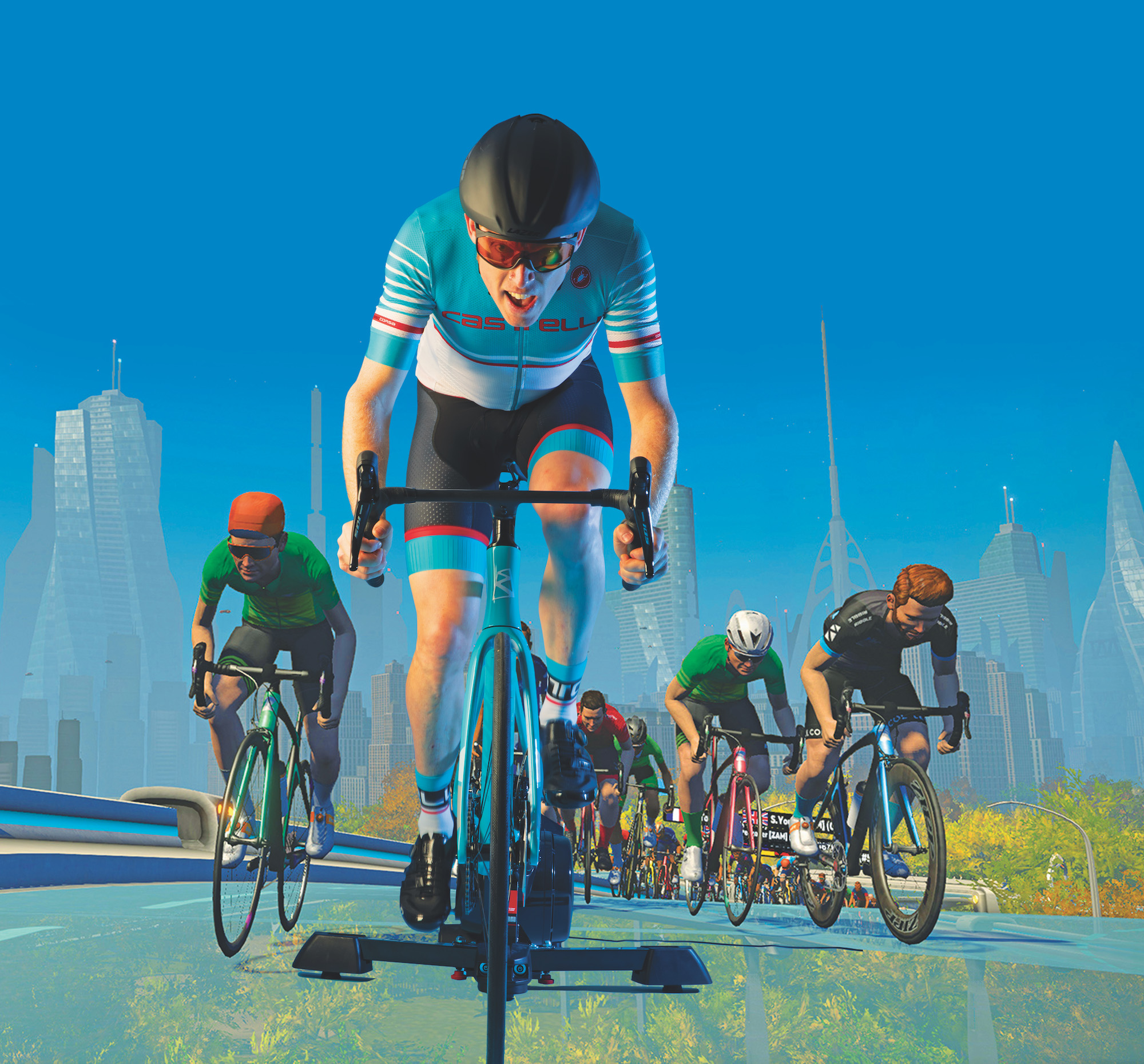
This one was a 48km race over two laps of a virtual replica of the 2018 World Championship course in Innsbruck, Austria, complete with that brutal climb. Again, it was savage — I held on to the front of the race for as long as I could, managing to maintain position for the first quarter of a lap as some rivals were fired out the back under the pressure of the ultra-high pace, but as soon as we hit the foot of the climb, my wattage per kilo betrayed me.
Despite holding power above my threshold, I was dispatched early on the climb and was forced to ride alone for much of the first lap, joining up with a small group on the flats, and eventually finishing after an hour and 35 minutes of racing, in 33rd place in the C category, with an average power of 269W.
One big-name rider well-placed to espouse the benefits of Zwift racing is Ella Harris, the winner of the 2018 Zwift Academy programme, which secured her a professional contract with the Canyon-SRAM team. The Zwift Academy is a talent ID project that sees thousands of riders from around the world complete a series of training sessions and events via the virtual training app, with finalists then competing for a pro contract, including doing battle in a Zwift race.
Harris is a Kiwi who rode her first year in the pro peloton last season and had her contract extended for 2020. She told me: “It’s actually quite a robust, legitimate process. It’s not just pulling someone’s name out of a hat for a contract. It’s not like it’s just a fluke.
“There isn’t really much racing in New Zealand. We have just local club racing, sometimes a series of road races, but there’s not really much on offer there [and] it’s difficult to get yourself to Europe, both physically and financially. [Turning pro] was one of those things that I always wanted to do, I just wasn’t quite sure how to go about it.”
What got Harris started in Zwift?
“I had a broken elbow for six weeks in 2017, so that really got me into Zwift; before that, I was only really using it when I needed to. I’d come back from racing in the US in the winter, so I wasn’t sure what training I wanted to do. Then I saw the Zwift Academy was on and one of my mates said that I should give it a go, and it just started from there.”
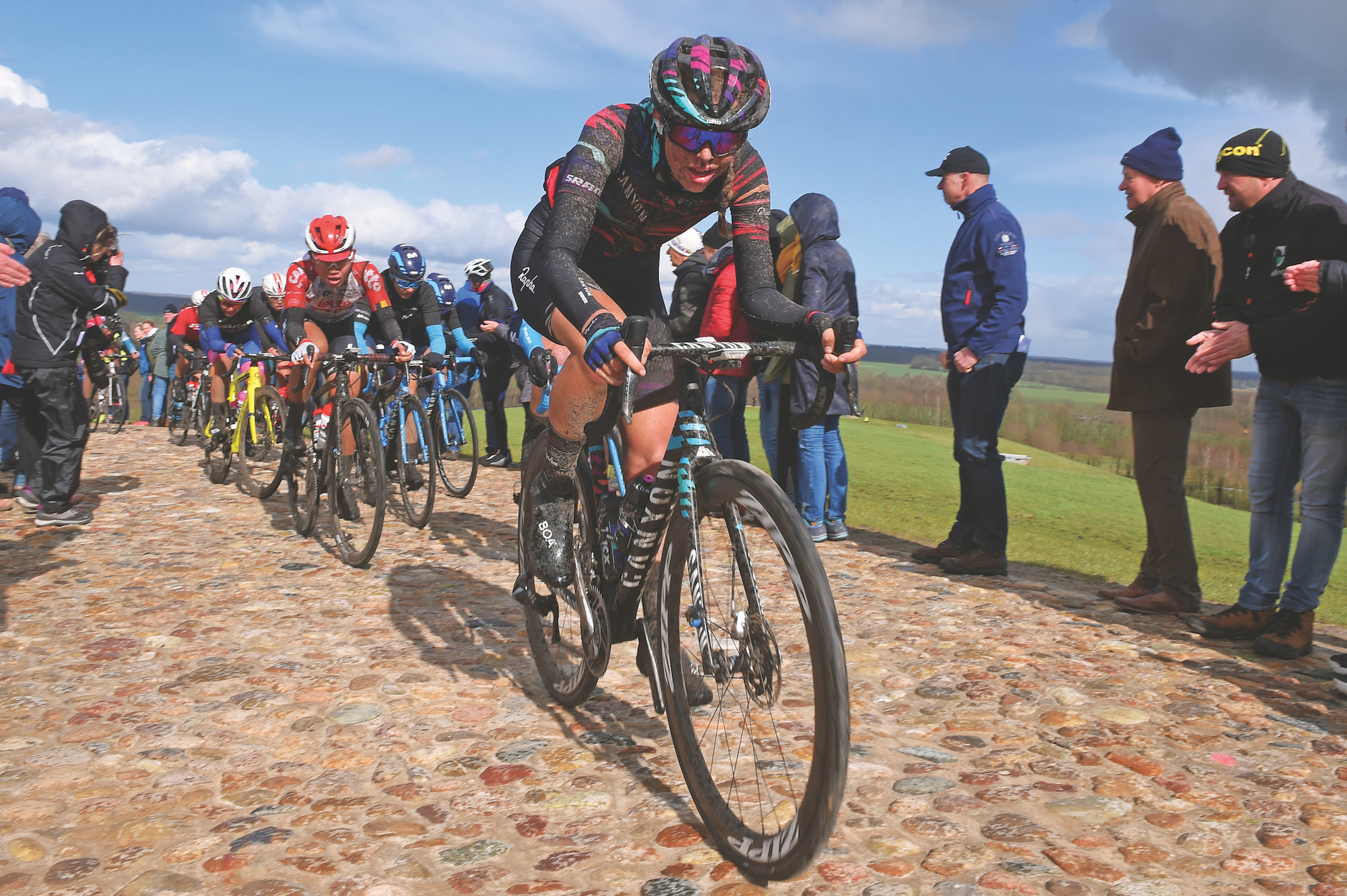
Just like real-life racing, the key to performing in a Zwift race is knowing when to burn your matches — keeping up with the rest without blowing your doors off before the final. According to Rowe, developing your anaerobic capacity — high power for a short time — is essential.
“I always say there’s nothing like racing,” Rowe said. “So, as training, get some Zwift racing in. In training, a session to develop your anaerobic capacity is key — being able to produce high power for a short period of time, one minute or so — to be able to absorb the fast starts and surges in effort throughout a race, and to get up there at the finish.”
However, it’s not all about top-end power. “You also need to be able to sustain high power of around threshold for most of the race,” added Rowe, “so ‘over-unders’ and sweetspot efforts are really beneficial. There are a load of ideal workouts in the Zwift Workout Library.”
Unlike real life, Zwift has so-called power-ups — think of them as temporary superpowers that will give you the edge over your rivals — randomly awarded every time you complete a lap or pass a KoM marker or sprint point. Clicking on the little icon that appears at the top of the screen activates the power-up. ‘Lightweight’ reduces your weight for half a minute, ‘Draft Boost’ gives you increased slipstream benefits for 30 seconds, and ‘Aero Boost’ gives you reduced drag for a short spell. Each is essential to performing in a Zwift race, something I still haven’t yet mastered.
Indoor’s dark side
Sadly, as is true for the entirety of cycling’s long and bittersweet history, virtual racing has a dark side. While traditional performance-enhancing methods would of course benefit your Zwift racing, online cheating is much simpler.
Zwift calculates your effort based on your watts combined with your weight, which unfortunately is taken on an honesty basis, with each user inputting their own kilograms. This can of course lead to some sad souls lying about their weight to improve their power-to-weight and therefore their performance. This is obviously entirely against the spirit, but more importantly it spoils the fun for everyone else. Cheats gain only dishonest, meaningless results in a virtual world — and out in the real world, they’d get dropped like a stone.
The folks at Zwift are trying to crack down on the cheats, setting up an organisation to police the game and investigate any suspicious results.
Zwift Accuracy and Data Analysis, or ZADA, initially started in 2016 as a community-driven effort to ensure fair racing but has now been formalised as a third-party organisation that will analyse race data. Anyone under suspicion is asked to submit equipment data, weight verification, power files, and in some cases even take part in laboratory testing.
While lying about weight is the most common form of Zwift cheating, there are more clandestine methods, including exploiting ANT+ technology to swap the power meter for a standard video game controller, letting riders choose their power output.
In 2019, Zwift cheating became headline news when the winner of the first ever British Cycling Zwift eRacing championships, Cameron Jeffers, was stripped of his title after it emerged he had previously manipulated in-game data.
Jeffers had used an ANT+ simulator to help him unlock the Concept Z1 ‘Tron’ bike, which gives a performance advantage to racers. He then used the bike during the National Championships — and was subsequently disqualified from the event, fined £250 and given a six-month suspension from all racing.
The case shows how Zwift and cycling’s governing bodies will have to be proactive in the fight against virtual doping, especially with the UCI hosting the first e-sports world championships later this year.
Putting the cheats out of my mind (as best as I could, at least), I returned to the online peloton to see if I’d honed my skills. This time it was a B-category 34.2km-long, six-lap, ultra-flat course on the circuit used in the Richmond, Virginia, World Champs back in 2015.
Part of the reason for the mind-bending pace in the early stages is that most Zwift races are mass starts, with all categories starting together. Inevitably, the A-category riders set an almost unmatchable pace for the rest of the bunch, but if you can hold on to those wheels, you might just be able to break from your category rivals and be carried to victory by those with stronger legs.
Starting with a huge burst of revved-up watts at the start gun, I held around 400 watts early in the race as the peloton settled into a rhythm, and by some miracle I found myself staying in touch with the front of the race. The pace eased somewhat, but the constant catch-and-release pace at the front was brutal. I still hadn’t perfected my technique at closing down gaps without sprinting flat-out, but as we came into the final lap I was still clinging on at the sharp end.
Into the final few kilometres, I realised I could be in with a chance of glory, but the pace only increased and I found myself struggling to stay in prime position for a sprint. Eventually, a small group broke free, leaving the rest of us to fight it out. I was with a select
unit of four riders, but I didn’t fancy my chances in the final kick, so I turned on the jets with 800 metres to go. I got the gap, but unfortunately the ticker at the right of the screen showed it was only three seconds and closing — I was caught at 500 metres, but somehow I found something deep in the reserves and kicked again, this time the move stuck and I pulled away. One rider behind was chasing, but inside 100m I knew he wasn’t a danger and I eased off as much as I dared, crossing the line fourth in the B category and seventh overall — my best result to date.
Still no indoor win, but if one thing is for sure, I’m going to keep chasing that elusive victory in the virtual world.
Take it outside: How Zwift racing can up your game on the road
The endless gains to be made on the indoor trainer are old news, but what can you expect out on the road after ramping up your Zwift racing? Matt Rowe explains.
“It will make you stronger! In Zwift racing, you are literally producing power the whole time, whereas IRL [in real life] you get lots of little breaks for a couple of seconds, in the wheels, around bends, etc.
“I am noticing riders I coach, along with the general cycling scene, are hitting the new year in better form each year, which I put down to structured training on Zwift throughout the winter. Rather than hitting January and having to build your fitness up, riders are now getting to January in good shape, and setting new PBs all through the year as they continue to build their form.”
Zwift tips: What makes a great Zwift racer?
Here are the top tips from Zwift’s senior PR manager Chris Snook
■ Know your competition
■ Learn the course, especially the best places to attack
■ Get your head around Zwift’s
in-game Power-ups
■ Be tactically aware, just like
a real race
■ Get fit! Nothing will improve
performance like focused training
Try it out: How to train for indoor racing
Try these interval sessions to give your online racing a boost
Anaerobic capacity: Duration 1hr
■ Warm-up: 14 mins
■ Effort 1: 2x10sec at 150% FTP, 50sec rest at 50% FTP
■ Recover: 4min at 50% FTP
■ Effort 2: 3x30sec at 190% FTP, 6min rest at 60% FTP
■ Recover: 2min at 50% FTP
■ Effort 3: 2x3min at 125% FTP, 6min rest at 55% FTP
■ Warm down: 30sec at 50% FTP
Threshold: Duration: 1hr 25min
■ Warm up: 15min
■ Effort 1: 15min at 90% FTP
■ Recovery: 10min at 50%
■ Effort 2: 15min at 90% FTP
■ Recovery: 10min at 50% FTP
■ Effort 3: 10min alternating between 1min 96% FTP and 1min
104% FTP
■ Warm down: 10min

Thank you for reading 20 articles this month* Join now for unlimited access
Enjoy your first month for just £1 / $1 / €1
*Read 5 free articles per month without a subscription

Join now for unlimited access
Try first month for just £1 / $1 / €1
Alex Ballinger is editor of BikeBiz magazine, the leading publication for the UK cycle industry, and is the former digital news editor for CyclingWeekly.com. After gaining experience in local newsrooms, national newspapers and in digital journalism, Alex found his calling in cycling, first as a reporter, then as news editor responsible for Cycling Weekly's online news output, and now as the editor of BikeBiz. Since pro cycling first captured his heart during the 2010 Tour de France (specifically the Contador-Schleck battle) Alex covered three Tours de France, multiple editions of the Tour of Britain, and the World Championships, while both writing and video presenting for Cycling Weekly. He also specialises in fitness writing, often throwing himself into the deep end to help readers improve their own power numbers. Away from the desk, Alex can be found racing time trials, riding BMX and mountain bikes, or exploring off-road on his gravel bike. He’s also an avid gamer, and can usually be found buried in an eclectic selection of books.
-
 I have been capturing my cycling adventures for over 20 years, and two of the best action cameras for cyclists have just hit their lowest prices on Amazon
I have been capturing my cycling adventures for over 20 years, and two of the best action cameras for cyclists have just hit their lowest prices on AmazonDeals Amazon has slashed the price on Insta360 cameras, including the highly rated X3, which has a huge 30% off
By Paul Brett Published
-
 MAAP teams up with QUOC; first collab is the Gran Tourer XC shoe
MAAP teams up with QUOC; first collab is the Gran Tourer XC shoeDesigned for off-road riding the limited-edition shoe features a new colourway and other features
By Luke Friend Published
-
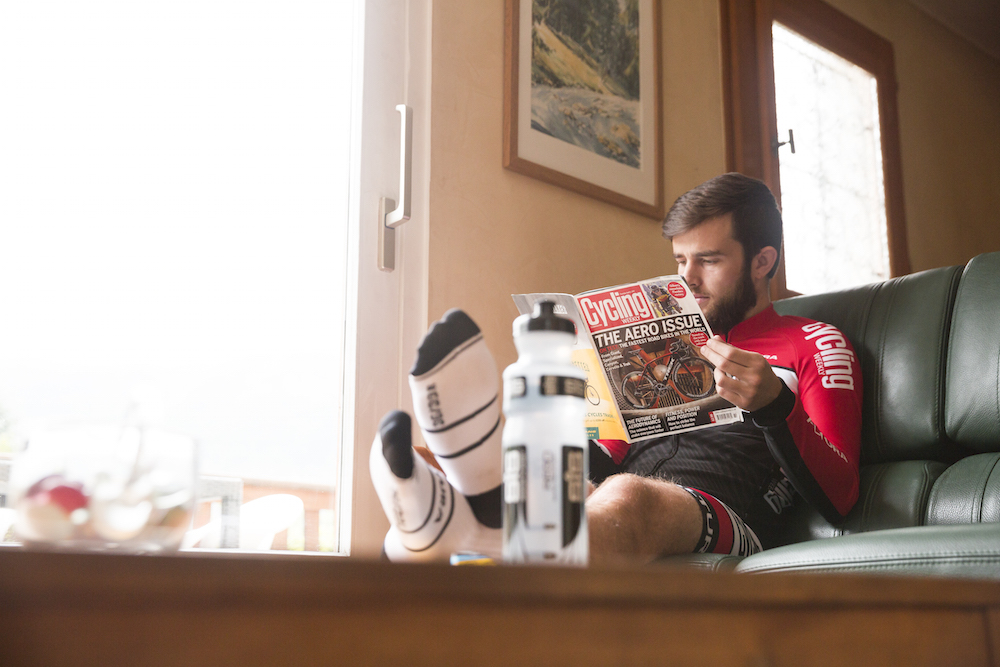 How many rest days should a cyclist take each week?
How many rest days should a cyclist take each week?We all know we need rest, but the specifics aren't always so black and white
By James Shrubsall Published
-
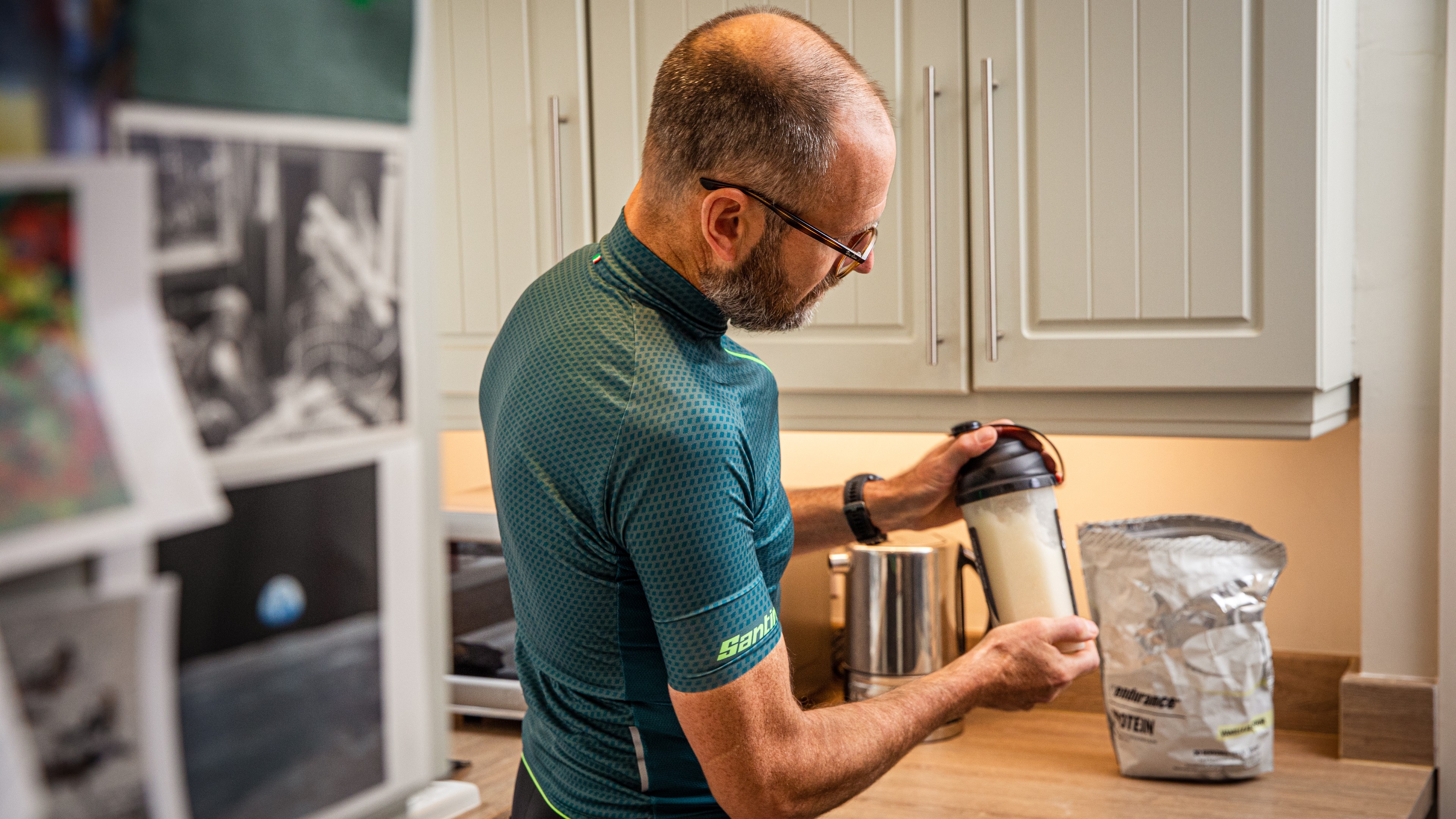 I'm a nutritionist - these are the five supplements for cyclists that actually boost your performance
I'm a nutritionist - these are the five supplements for cyclists that actually boost your performanceThere are stacks of powders, pills and potions that carry plenty of marketing but little scientific backing – here are the five supported by robust research that could really help you go faster
By Anita Bean Published
-
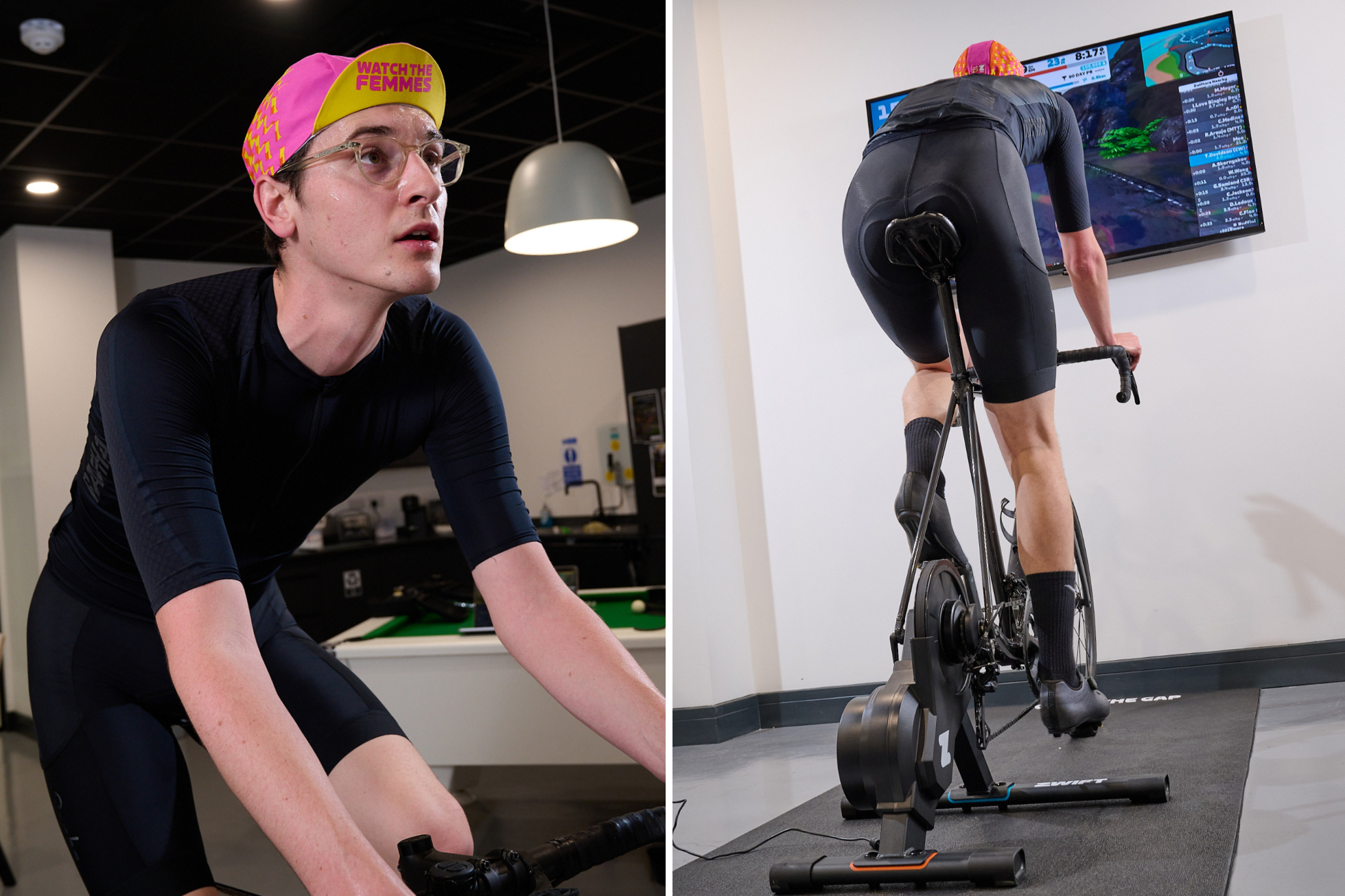 My best winter ever: Why I shaved my legs for my first Zwift race
My best winter ever: Why I shaved my legs for my first Zwift raceAfter a month of hard training, it’s finally race day. Can I win the 10-mile time trial?
By Tom Davidson Published
-
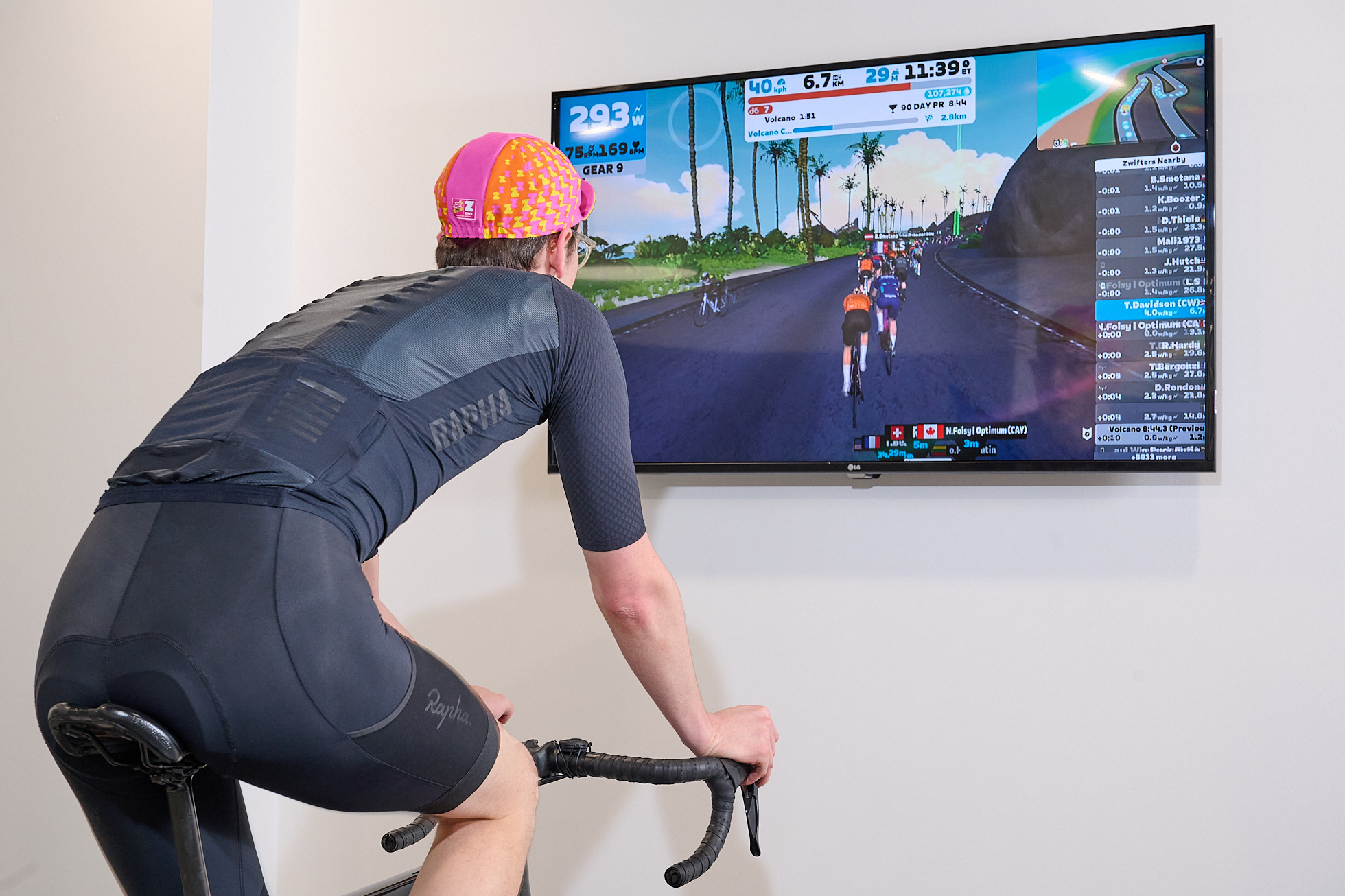 My best winter ever: My new coach is a three-time Olympic champion - I’m guaranteed to win my first Zwift race
My best winter ever: My new coach is a three-time Olympic champion - I’m guaranteed to win my first Zwift raceThere have been ups and downs in my training for the 10-mile time trial. It turns out I groan when I dig deep
By Tom Davidson Published
-
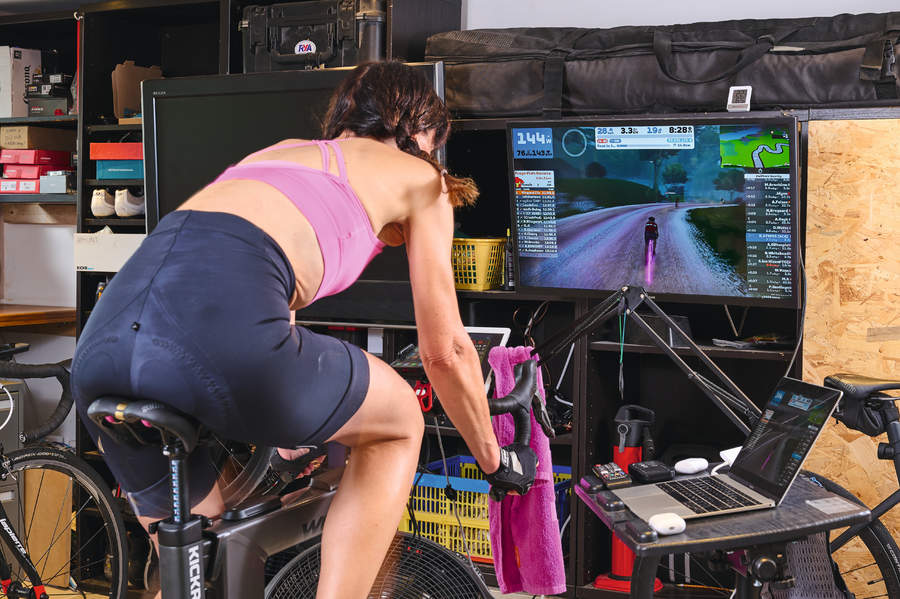 'The Earth’s circumference is 40,075km and I went over 45,000km': Meet the cyclists riding the furthest and the longest from the comfort of their homes
'The Earth’s circumference is 40,075km and I went over 45,000km': Meet the cyclists riding the furthest and the longest from the comfort of their homesIn search of indoor riders who go beyond the bounds of accepted norms, Steve Shrubsall tracks down a cast of characters who leave blood, sweat and traces of their soul on the turbo trainer
By Stephen Shrubsall Published
-
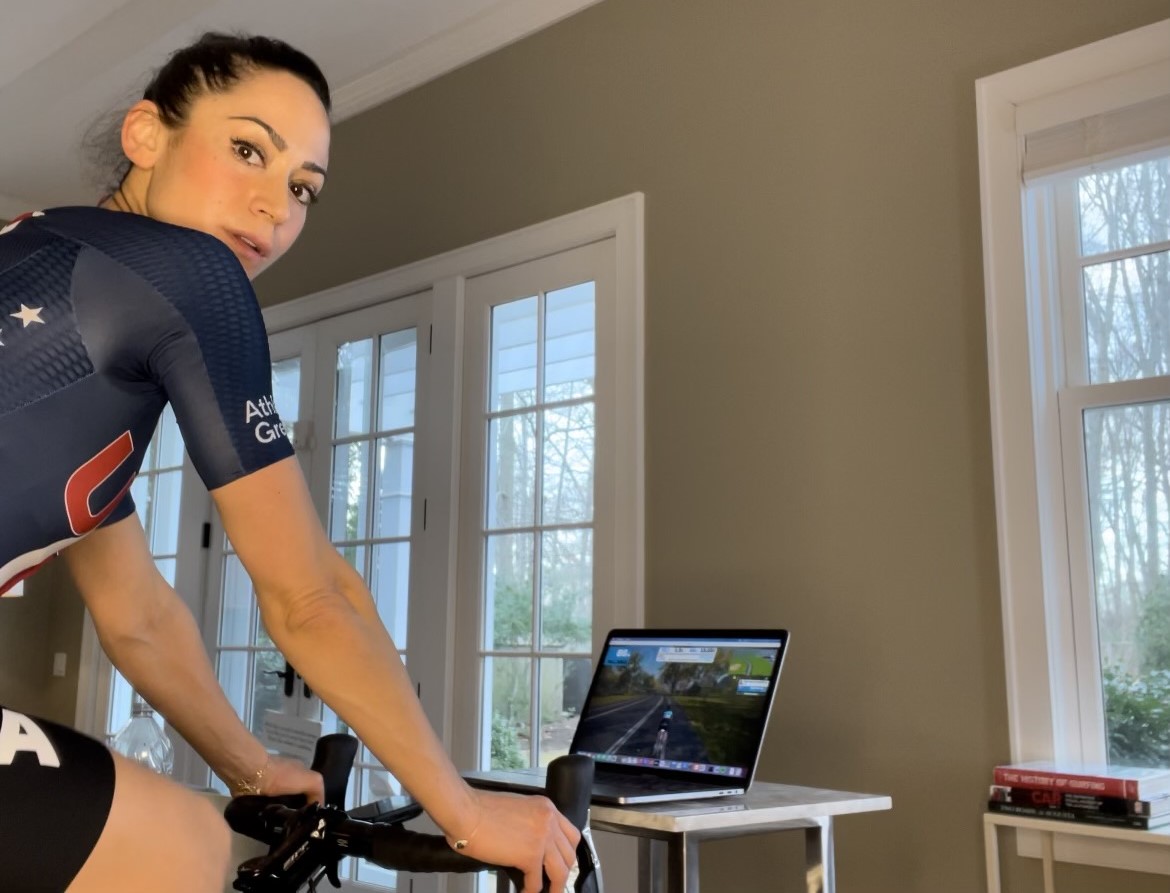 Real-world success: top-ranked Zwifter crushes first 'real' bike races
Real-world success: top-ranked Zwifter crushes first 'real' bike races"Outside always felt like this unicorn, something mystical or magical that I couldn’t do," says American Esports elite Kristen Kulchinsky
By Christopher Schwenker Published
-
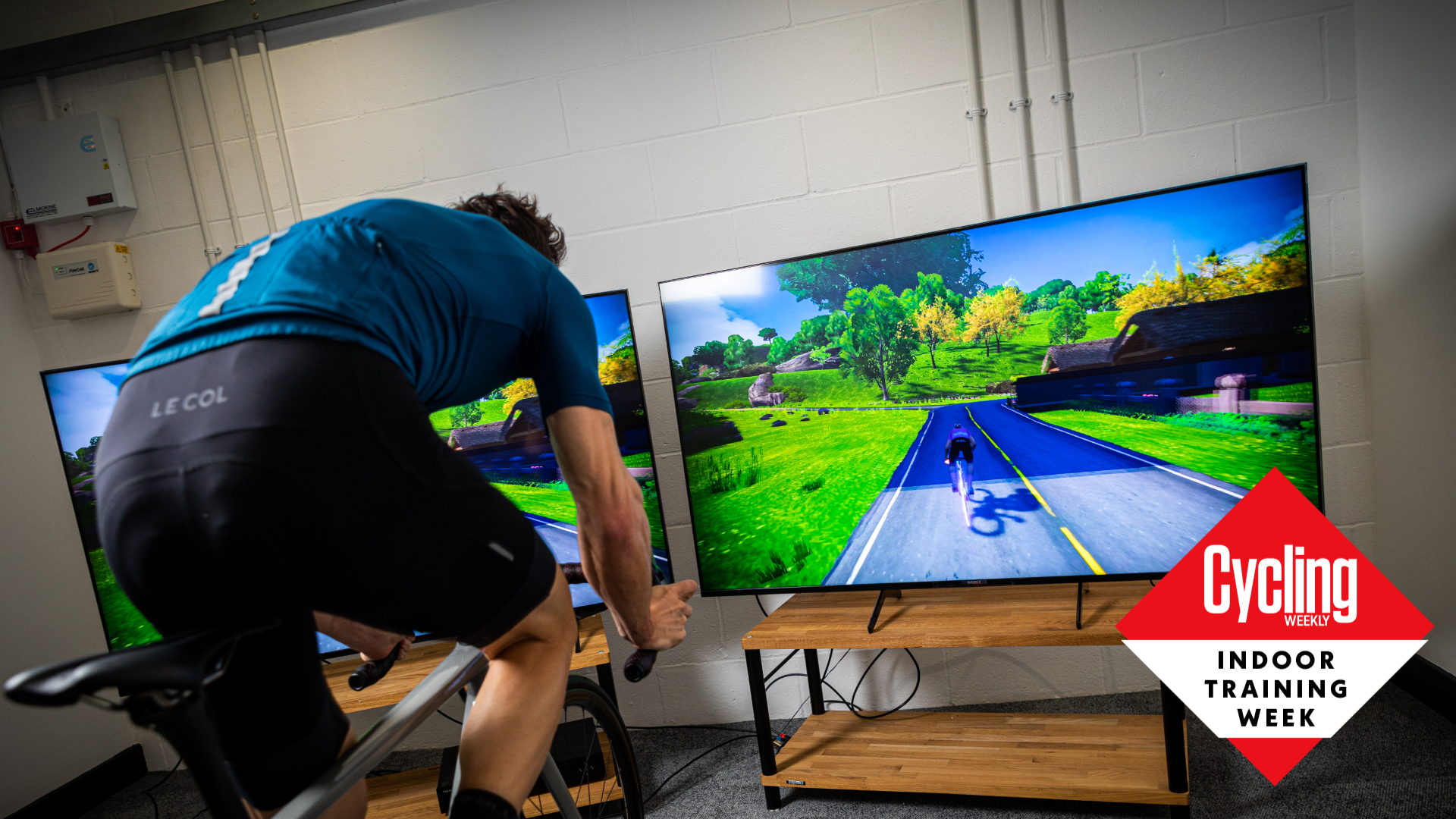 How to challenge yourself on Zwift without entering a race
How to challenge yourself on Zwift without entering a raceBuilding up to more demanding routes, setting PBs up the Alpe du Zwift, hunting out the in-game segments – there are so many ways to push yourself without taking to the virtual start-line
By Anna Marie Abram Published
-
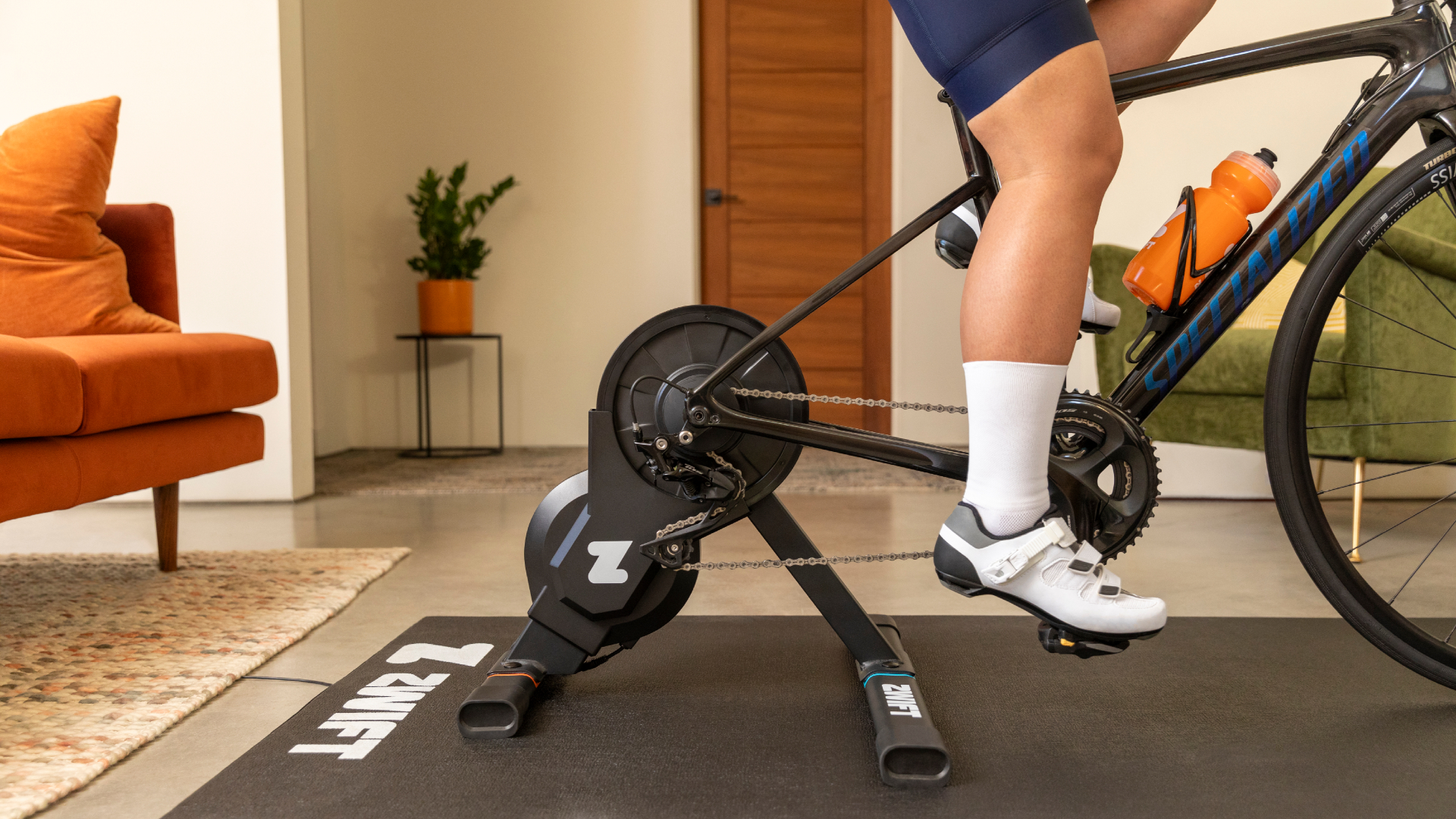 Zwift’s new Hub One smart trainer ditches the cassette for compatibility with 'almost any 8-12 speed bike'
Zwift’s new Hub One smart trainer ditches the cassette for compatibility with 'almost any 8-12 speed bike'The Hub One offers ‘virtual shifting’ similar to a smart bike - with the resistance changes handled internally, there’s no reason for more than one sprocket
By Anna Marie Abram Published